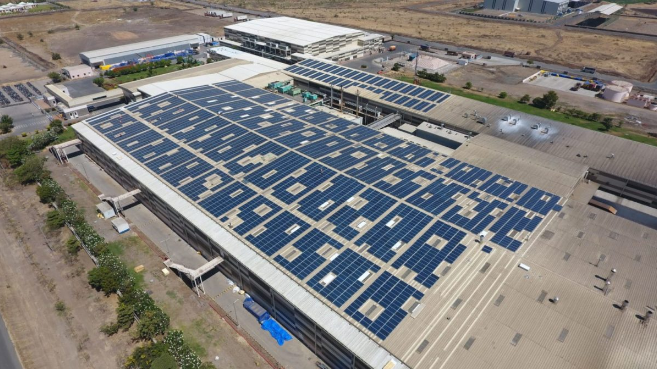Rooftop solar adoption has not gathered the desired momentum in India despite the government push. Major reasons are policy conundrums, ill-designed institutional and governance structures, distorted market mechanisms, and technical challenges such as those involving grid connectivity, according to a new report by Asian Development Bank.
India achieved 4.4 GW of installed rooftop solar capacity by December 2019, which is just 12% of the 40 GW by 2022 target. Out of the total rooftop solar installations in the country, the residential sector has been the worst performer, at 16%, compared to other competing sectors such as industrial and commercial.
The report cites persistent policy-level inconsistencies as a primary cause of the slowdown. Poor and piecemeal implementation of net metering policies at the sub-national scale is a major roadblock for the uptake of rooftop solar in India. Most of the state regulations on net metering set the maximum capacity limit at 1 MW per metering point for rooftop solar systems to be connected to the distribution grid, which hinders large-scale deployment. Often this capacity ceiling is imposed based on the poor financial health of the distribution utilities. These arbitrary caps impede the uptake of rooftop PV.
The report stated that while rooftop solar systems require bottom-up approaches focusing on intense consumer engagement, the current policy and regulatory regime is designed based on a top-down approach with a uniform set of policies and regulations that lack flexibility. The most recent evidence of such policy-level obstruction is the withdrawal of net metering policies in certain states for commercial and industrial consumers. There is no adequate understanding of how the existing intervention types perform in varying policy, regulatory, and governance environments.
Apart from regulatory constraints, there are also societal and informational constraints. Poor understanding of the rooftop solar benefits among users is a major challenge. This is compounded by the high upfront capital cost to deploy the systems, particularly for residential consumers.
In one study surveying five Indian cities, close to 50% of respondents were found to be unaware of rooftop solar technology and its applicability in the household context.
In addition to the general information asymmetry, there is a substantial lack of knowledge about the specific products, processes, and approval systems inherent with these systems. Lack of credible and objective sources of information has led to consumers relying on vendors for information.
This lack of information is further compounded by the high upfront capital cost to deploy these systems, as these are often not within reach of the larger section of the society. Although there has been a dramatic reduction in the rooftop solar system cost in recent years, the initial cost continues to be a major hurdle even for small projects.
Further, banks and financial institutions are reluctant to lend funding for these projects due to their small scale. Traditionally, banks charge a high interest rate to developers (10%–12%, or up to 14%) depending upon the associated risks, nature of the project, and the borrower’s credit rating.
Lack of technical capacity often acts as a barrier to scaling up these interventions, particularly in rural settings. The needed market eco-system has not been created, and the much-needed supply chain has not yet been established.
Recommendations
The report stated policy makers need to modify the net metering policies and their obstructive provisions. The removal of capacity constraints would be attractive not only to existing consumers but also to new consumers.
Even if it is not possible to have uniform policies across states, policies could be formulated considering state-level nuances characterized by factors such as unmet Renewable Purchase Obligations and the strength of distribution utilities, it added.
A structured approach could go a long way in arresting some of the challenges currently encountered. The best way to minimize the regulatory burdens and procedural complexities is to institutionalize a single-window facility for the entire eco-system of rooftop PV deployment, encompassing connectivity, net metering, electricity inspection, and limitations on sanctioned load.






